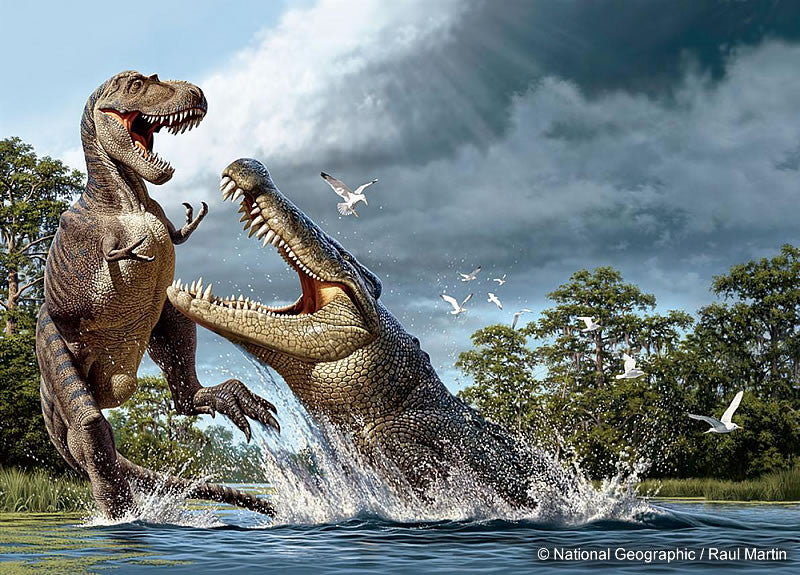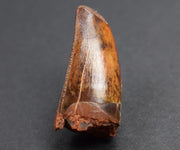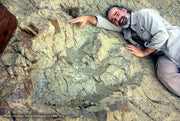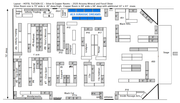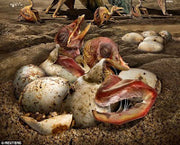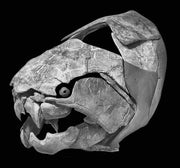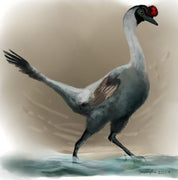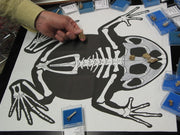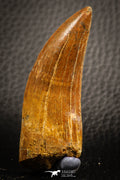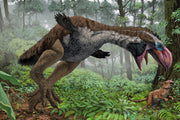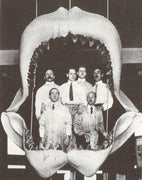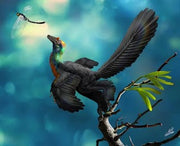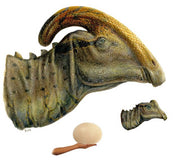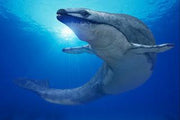Depending on who you ask, the answer is different. Unfortunately, giant prehistoric crocodiles' fossils aren't found complete, and only isolated parts of the skeleton and fragments form this puzzle. For the time being, we are sure about three species competing for the top on this peculiar ranking.
Deinosuchus
Depicted in the front picture, it lived 75 millions of years ago, at the end of the Cretaceous. It's important to note that actually it's not a crocodile, as it's kin to the American alligators.
It has a broad, robust mouth, which allowed this species turn on itself to dismember the meat of its preys, as today's crocodiles do.
Based on its features, paleontologists assume it fed on land animals, dinosaurs. It stalked them from the water. The fossils of some herbivorous dinosaurs show teeth marks by the Deinosuchus, which is a definitive proof about its diet. Regarding its size, it went from 10 to 12 meters.
Purussaurus
Strong, robust, plain and broad jaws. It was kind to the alligators, but it lived 13 millions years ago, during the Miocene. From the three candidates, this is the only one who did not see any dinosaurs, so it couldn't feed on them. Its diet included fish, turtles and mammals, who shared its habitat.

As the Deinosuchus, the Purussaurus could also turn on itself to exert force and cut its prey into pieces. Being able to do the "death roll" made these huge crocodiles lethal predators. Its length is estimated at 11-12 meters.
Sarcosuchus
Only dermal plates and big teeth have been found of this crocodile. Luckily, Paul Sereno discovered a whole cranium, which shed light on this creature. We know it lived 110 millions of years ago, at the beginning of the Cretaceous.

The snout is long and thin, at its end the bulky nostrils stand out, as well as its sockets, placed elevated and at the center of the cranium. These two adaptations allowed the Sarcosuchus stalk land preys with both vision and smell, without exposing its head completely.
Its feeding should have been on fish and medium and small size land animals. About its size everything is hypothetical, it's length is estimated at 11-12 meters.
In the picture below we can see the crania of the species, together with the cranium of a contemporary marine crocodile and a human's cranium.

As we can see, no data is conclusive and the only obvious thing is that any contemporary crocodile seems small compared to these giants. It's important to note that the data in this writing about the length are estimations made by scientists. Although they take into account biomechanical parameters, they are only approximations and not scientific evidence.
The fight to be the biggest crocodile out there was probably very tough in the prehistoric times. And we have a great collection of fossil crocodile teeth and bones for sale where you can check the sizes for yourself.
Sources:
- Heading picture: A Deinosuchus lunges at an Albertosaurus. Illustration by Raul D. Martin, National Geographic Stock.
- Blanco, R. E.; Jones, W. W.; Villamil, J. N. (April 16th, 2014) «The 'death roll' of giant fossil crocodyliforms (Crocodylomorpha: Neosuchia): Allometric and skull strength analysis».
- Documentary "Supercroc" National Geographic.
- Documentary "Paleoworld", Discovery Channel.
- Schwimmer, David R. (2002). «A Genealogy of Deinosuchus». King of the Crocodylians: The Paleobiology of Deinosuchus.
This post can also be read in Spanish at our partner blog Made in Pangea.



